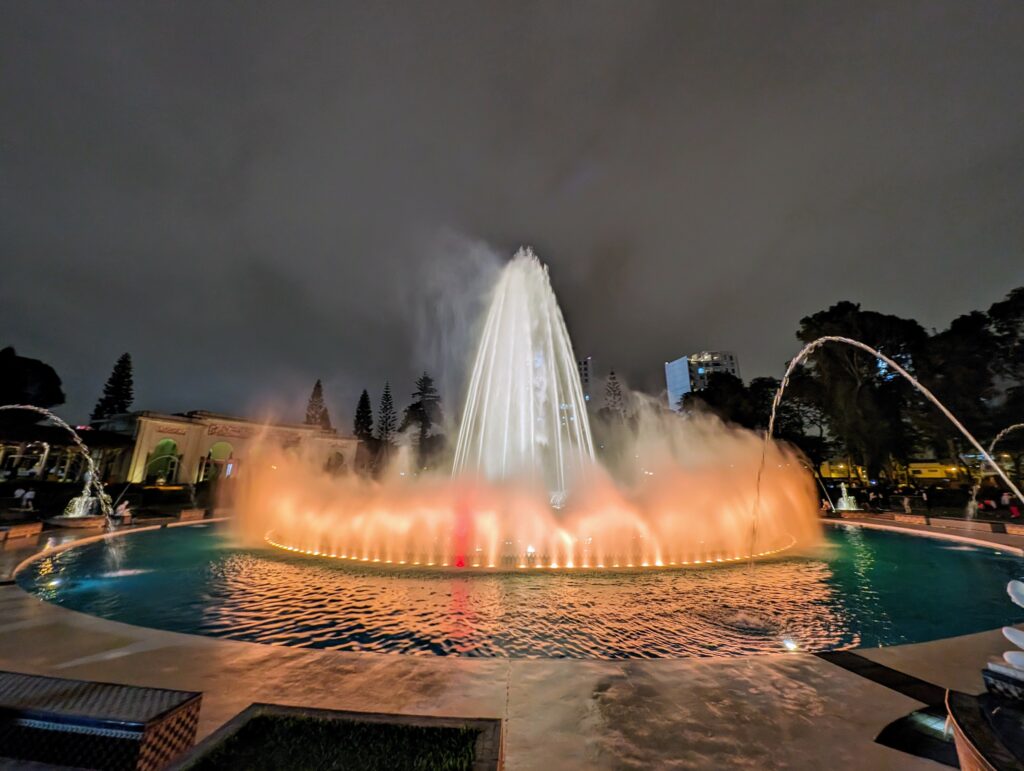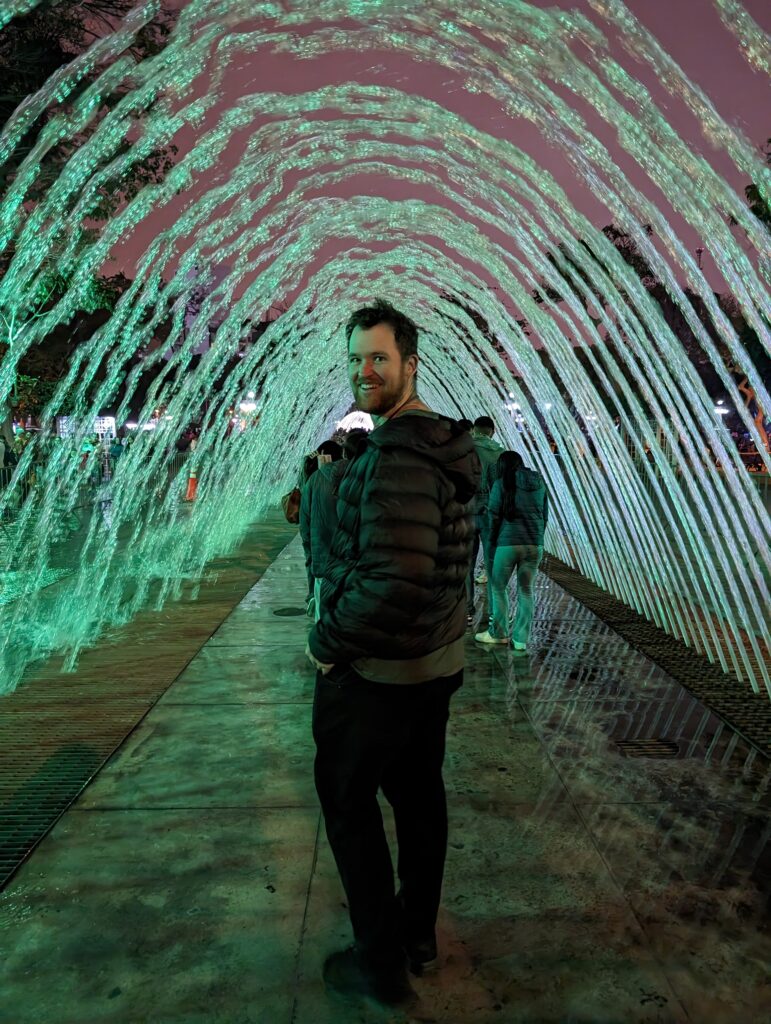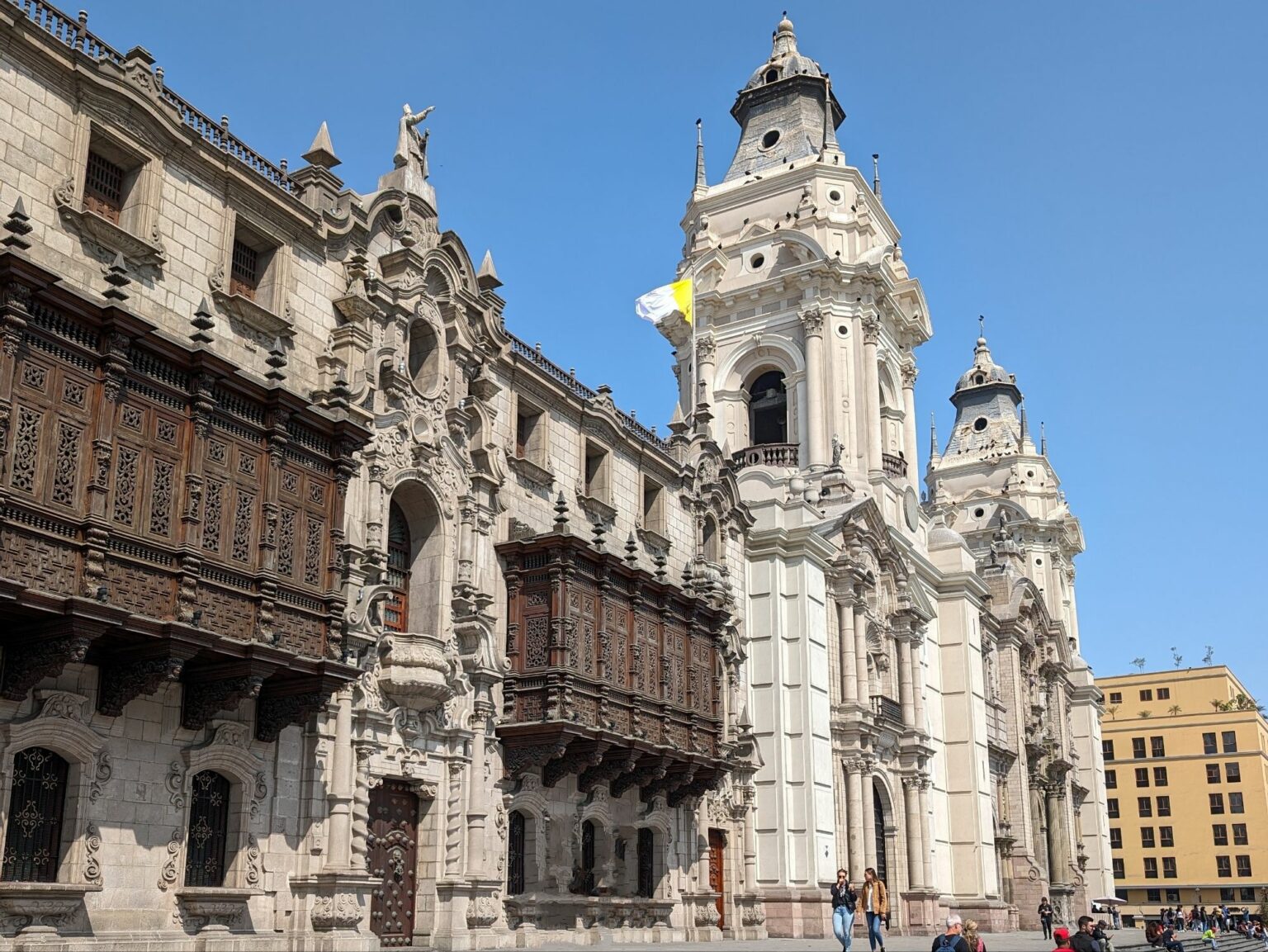Lima is the capital city of Peru and is the business hub of the country. While it is not the most interesting city from a tourist perspective, it does have a few places to explore that will give you insight into the culture and history of this country. And if you are a foodie, this is truly the city to visit!
Lima was not the capital city of the Incan empire. (That was Cusco and you can read more about visiting Cusco and its surrounding area here.) Despite this, it still has a rich history to explore, including ancient societies that occupied the region, the conquest of the Spanish, and finally, a war with Chile that had a great effect on the country.
While this article discusses what to do in Lima, the city is also an incredible celebration of the culinary culture of the country. You can read more about different places to eat and drink in Lima here.
Where to Stay in Lima, Peru
Now, let’s get one thing out of the way: safety. Lima is a major city, and like many other major cities, it has some more dangerous areas. It is important to remain vigilant in any major city you visit. Here, if you choose accommodations in the neighborhoods that we’ve listed below, you will be in some of the safest areas of the city.
When it comes to visiting other areas of the city, it is important to ask locals about how they would recommend getting around and visiting the city. You can always ask your hotel concierge, Airbnb host, doorman, restaurant server/host, etc if you can walk somewhere or if they recommend taking an Uber (which they do have in Lima). The most important tourist destinations are not in locations that are dangerous for visitors and it is often recommended to leave the historic center of the city after dark.
Miraflores
Miraflores is often the most recommended place to stay in Lima, and for good reason! It is a modern neighborhood near the ocean with many delicious restaurants at a variety of price ranges. Miraflores is a very safe area of the city and has all the conveniences travelers could need.
The center of this neighborhood has a lot of restaurants with traditional Peruvian food and modern international cuisine. The western edge of the neighborhood is the ocean, and while there are fewer restaurants here, there is a beautiful park along the ocean cliff that is relaxing to walk along and enjoy the views.
Barranco
Barranco is the other area that is often recommended. It is considered a more “bohemian” neighborhood and also has a variety of restaurants and conveniences for any traveler. Some of the lower-budget restaurants here are cash-only, adding to the bohemian vibe of this area. Similarly to Miraflores, Barranco is along the ocean with a stretch of park that can allow anyone to enjoy nature and views.
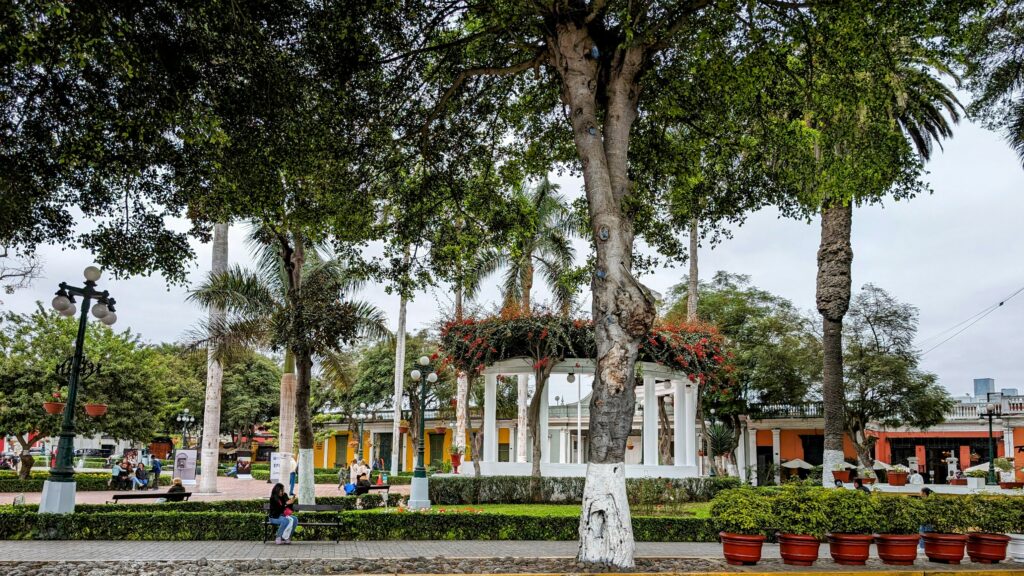
How to Get Around Lima, Peru
Unlike other major cities around the world, Lima does not have a metro or subway system to get around the city. And the city is relatively sprawling. There are two major ways to get around, taking the bus or Uber. We recommend Uber as being the easiest and most convenient form of transportation.
For both of these options, you will need to have service on your phone. We recommend having an international phone plan only if it is included in your phone plan. If international service is not included, do not purchase international service from your carrier. It is often overpriced! You can either purchase a SIM card with some data at your destination, which will be the most economical option, or use an E-SIM service directly on your phone. An E-SIM will not be as inexpensive as an actual SIM card but will be incredibly convenient because you can purchase it before arriving at your destination and activate it once you get to Peru.
Bus
The bus system connects the entire city of Lima, Peru, and is the major form of public transportation. The bus system is a safe and inexpensive way to travel throughout, but it may not be the most efficient. To ride the bus, you will need to purchase a transit card. These can be found at the major bus stations in the city. To get a card, you will need to have cash to both purchase a card and load sufficient money on it to ride the bus.
To determine which bus to take to get to your destination, you can use your Google Maps application, which will give you the bus number and stop location.
Uber
The second option is using Uber. This service is readily available in Lima and is the safest form of transportation because it will get you from one location to another and will track your movement during the ride. It is also much easier to navigate the city if you do not speak Spanish. We also recommend taking an Uber from the airport to your accommodations when you arrive at the Lima airport.
Day 1: Exploring the Historical Center of Lima
Free Walking Tour to Learn About the History of Lima
To start your experience in this new city, we always recommend finding a tour that will help explain the history and culture of the location you are discovering. Most cities outside of the United States have a company that provides free historical and cultural tours of the city. While you can look up the city’s most famous monuments and read about the location’s history, these free walking tours provide the context around how all this connects to society and culture. And they are often FREE!
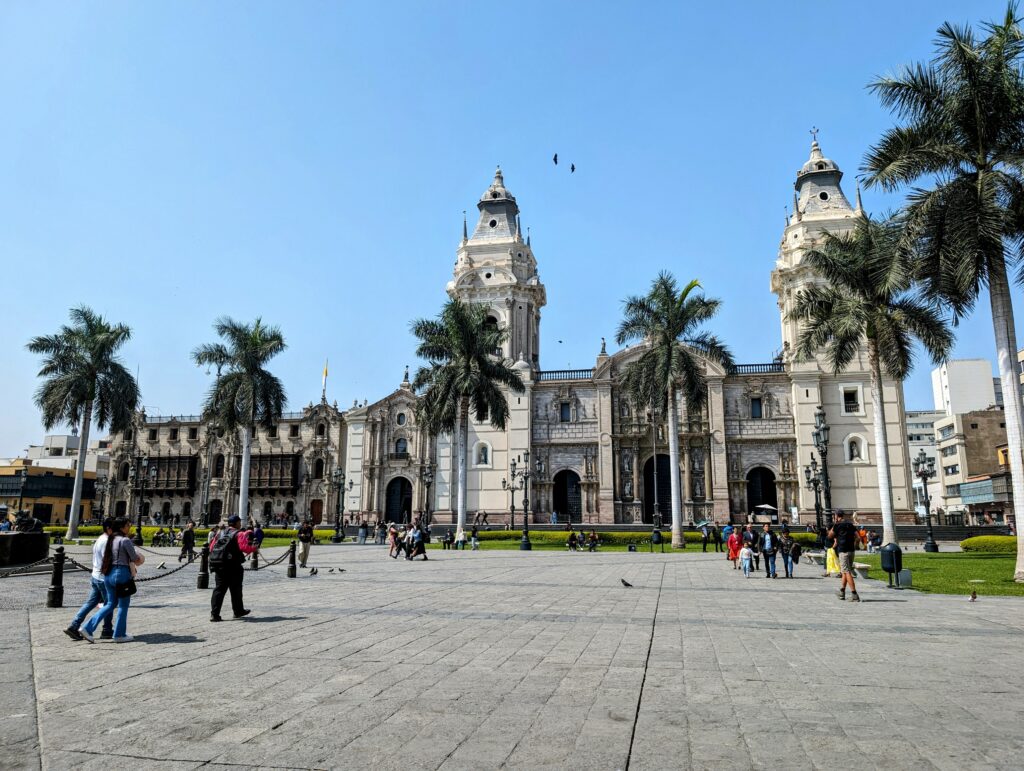
In Lima, we took a tour with Inkan Milky Way, a 100% local and certified company in different cities in Peru. Their guides are all certified professional tour guides. Their free tour of Lima Center goes through the historical sites of Lima that remain in the center and discuss the history of Lima since the Spanish conquest. Their tour can leave from Miraflores, teaching you about taking public transportation in the city, or from the city center itself. This company also has free tours of the neighborhoods of Miraflores and Barranco, if you want to do these tours during Day 2. They also have some paid tours of particular topics in Lima that could be of interest to tack onto your trip.
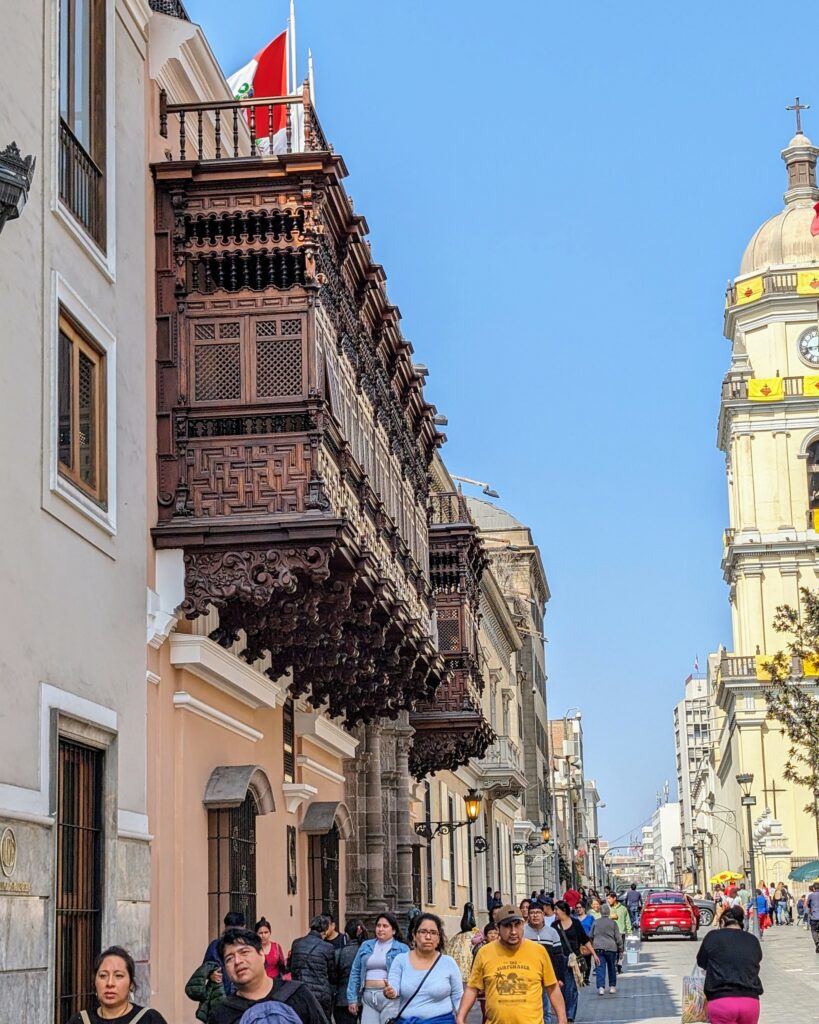
Lunch at a Classic Chifa Eatery
After your walking tour, you will have worked up an appetite and it will be time for lunch. There are a variety of options in the city center, including places with “Menu Ejecutivo” options, which are inexpensive menus that often include an appetizer, main, and dessert. This is a great way to try different classic Peruvian dishes.
After the tour, we recommend trying a Chifa restaurant in the Chinatown of Lima. Chifa is a fusion between traditional Peruvian and Cantonese food, which has become a part of Peruvian cuisine since a large population from China has emigrated to Peru and influenced the cuisine. You will not visit Lima’s Chinatown during your walking tour but it is walking distance from where the tour ends and is completely safe to walk there during the daytime. Chifa Wa Lok is one of the many restaurants in this town but you know that it is good because of all the locals who line up outside, waiting to eat. There may be a short wait when you arrive at the restaurant, but even if the line is long, the tables turn over quickly. You can read more about restaurants and food in Peru here.
Pisco Tasting
After your feast for lunch, you can continue to walk around the city center and make your way to the Museo del Pisco. Now this isn’t a museum about Pisco but a bar with a specialty in Pisco (and it’s a local chain that you can find in some other cities in Peru). It is a great place to try the traditional pisco sour that comes from Peru. They also offer a pisco-tasting experience where they will explain the history and process of creating pisco and allow you to taste different types and levels of pisco. You can also take a pisco sour-tasting course or a sampling of 6 of their cocktails. You may not need a reservation to go to the Museo del Pisco but you may have to wait to do one of the experiences based on the availability of the bartenders and servers. But if you have to wait, you might as well wait with one of the delicious cocktails that they have on their menu!
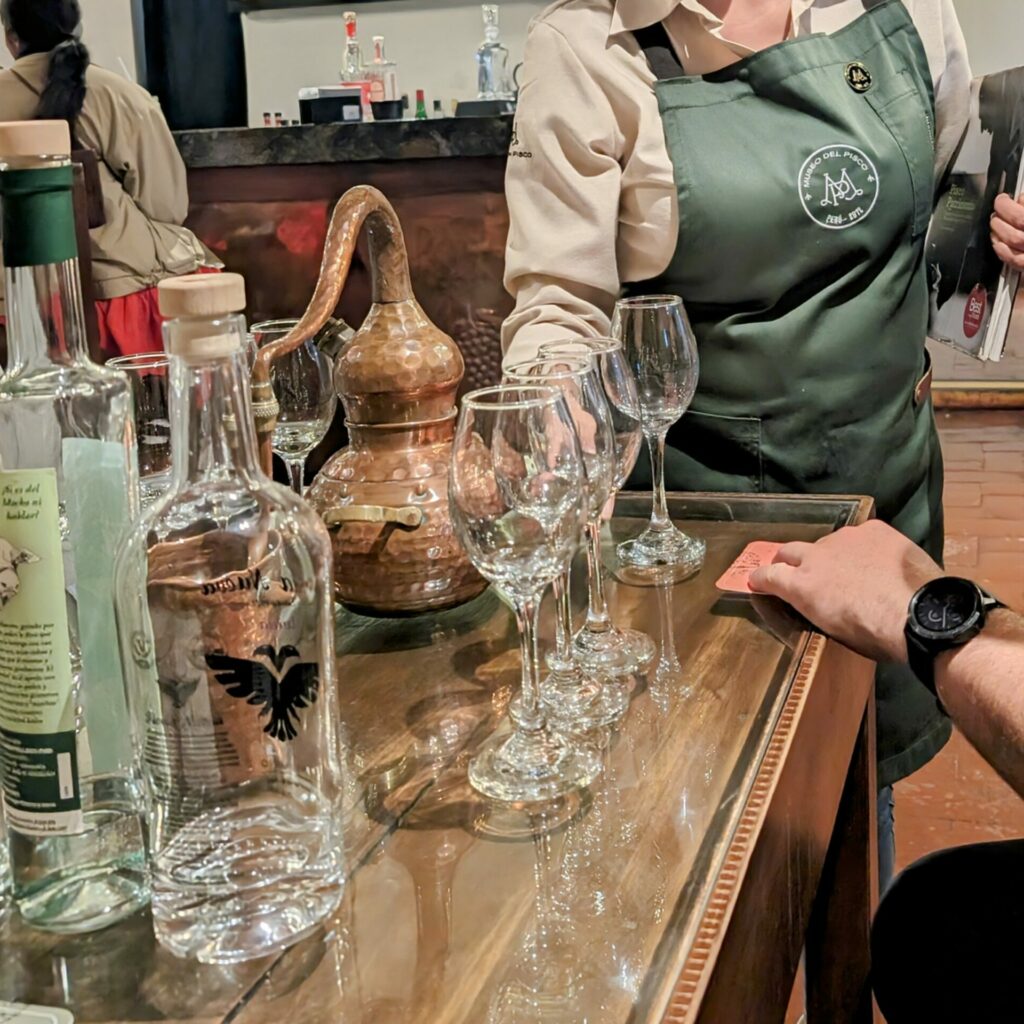
(Avoiding purchasing bottles of pisco from the Museo del Pisco because you may find more favorable prices at the local grocery store, even with the experience discount.)
End of the Day
This is the end of the day. Take an Uber back to the hotel of your neighborhood and relax a little before going out to eat dinner near your accommodation or eat some of those leftovers that you surely have from Chifa Wa Lok.
Day 2: Walking Around the Neighborhoods of Lima
For the second day, we will focus on walking around two of the neighborhoods of Lima, Miraflores and Barranco. You can start from either neighborhood, based on the location of your accommodation. This day is meant to be relaxing and to take in the character and charms of these different neighborhoods. Feel free to stop in different cafes, bars, restaurants, shops, and more that you see along the way.
Visiting Miraflores
Mercado Nº 1 de Surquillo
This market is located in Miraflores. It is a traditional food and grocery market with many stalls that include produce, meat, fish, condiments, and restaurant stalls with sandwiches, juices, ceviches, etc. Stop by this market to see how locals shop and grab a snack for yourself to enjoy at the market.
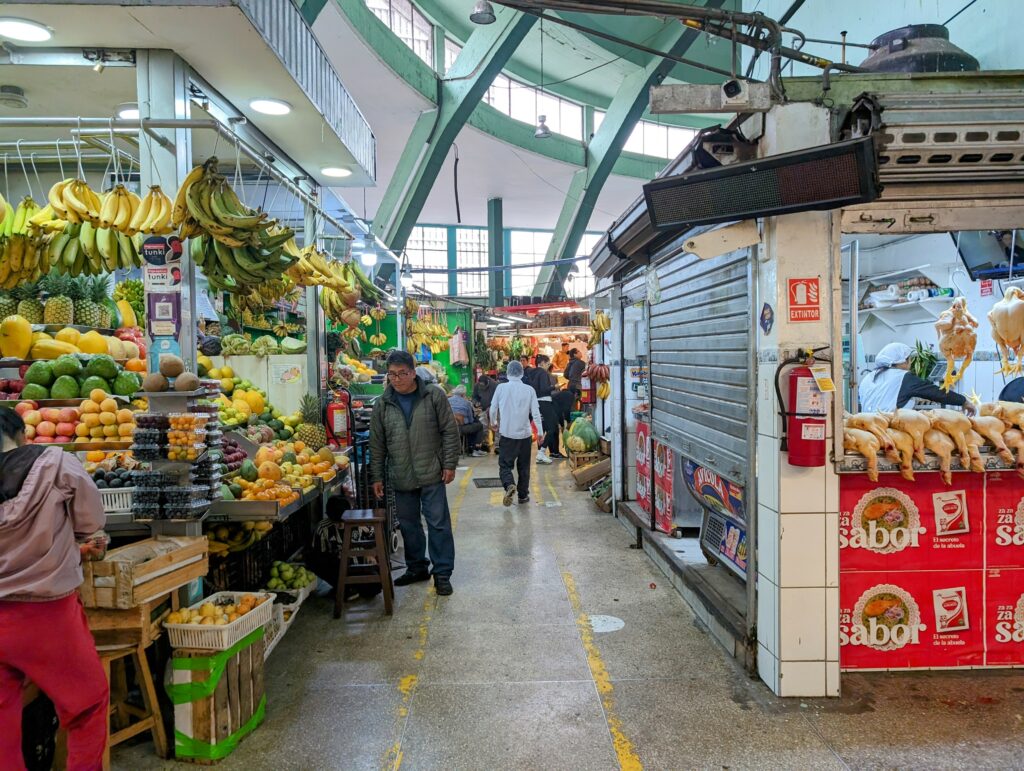
Indian Mercado Lima
Near the Mercado Nº 1 de Surquillo is the Indian Market of Lima. Local native people run this open-air market to sell different artisan and souvenir products. It’s a great place to purchase your souvenirs for your trip to Peru, find local artwork, and take in the artistry of the region.
Parque Kennedy
The final location to stop by in Miraflores is Parque Kennedy. This local park is a great place to walk through and people-watch. It is a cat haven and has many cats roaming through the park. They are friendly and supported by the local community with people who come to the park consistently to feed each of them. Even if you don’t like cats, it is always interesting to walk through this unique experience.
Walking Along the Ocean
To get between Miraflores and Barranco, you will want to walk along the ocean-front through the parks that line the ocean cliff. For this order, you are walking from Miraflores to Barranco but if you are going in the other direction, just flip the order of the parks.
Marine Lighthouse
The first park on the waterfront includes the Marine Lighthouse. This working lighthouse is the northernmost point for your walk along the cliffs overlooking the Pacific Ocean.
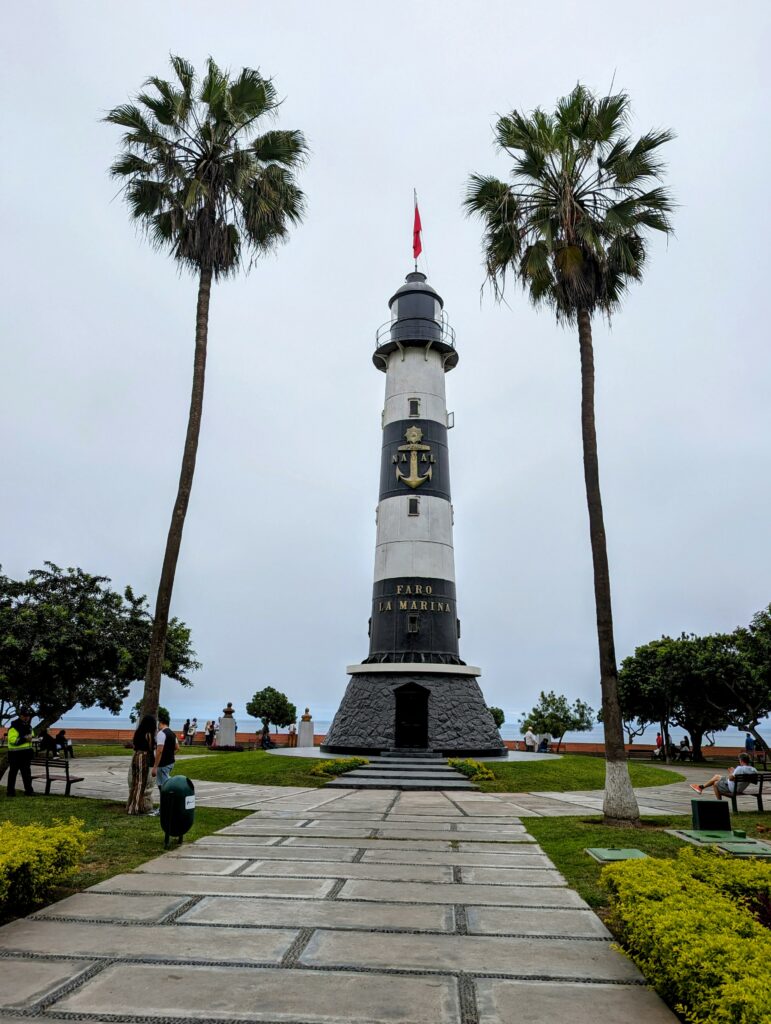
Malecon de Miraflores
This promenade is the walk that you will follow along the oceanfront. Take in the views and explore an area that is popular for both tourists and local residents. If the weather is appropriate (with enough wind), you can even sign up to go paragliding along the coast. You will want to continue on this trail to Barranco.
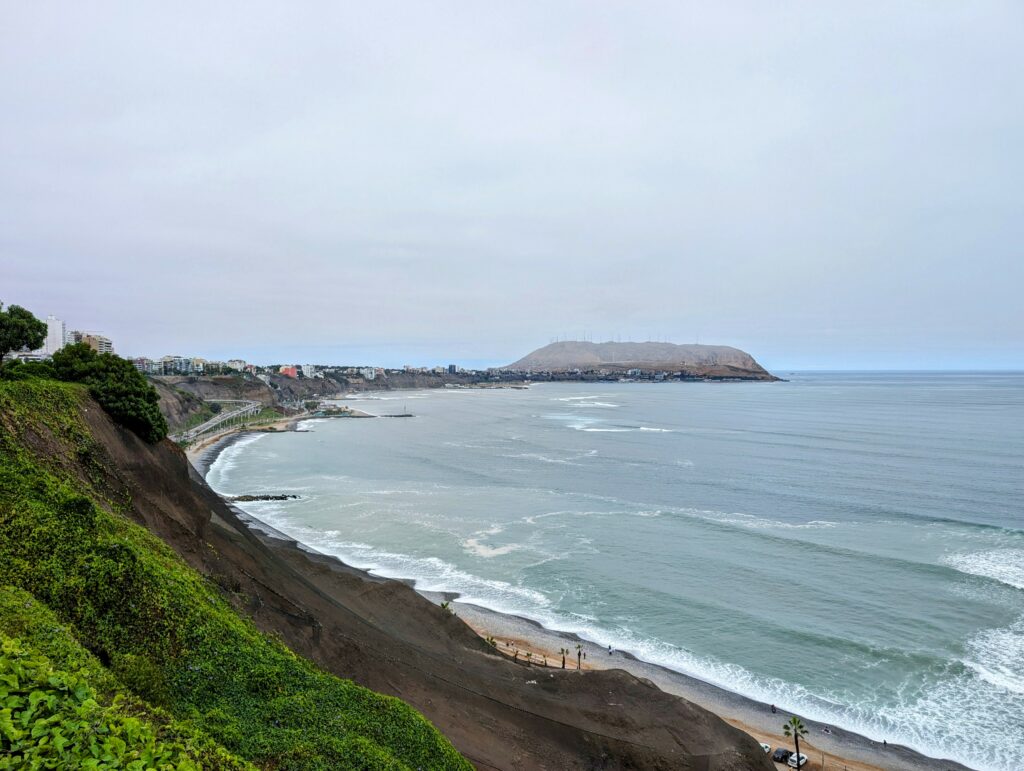
Love’s Park
Along the Miraflores boardwalk is Love’s Park, a park dedicated to love. Inspired by the designs of Gaudi, it includes mosaics with Spanish and Quechua poetry and sculptures all dedicated to love.
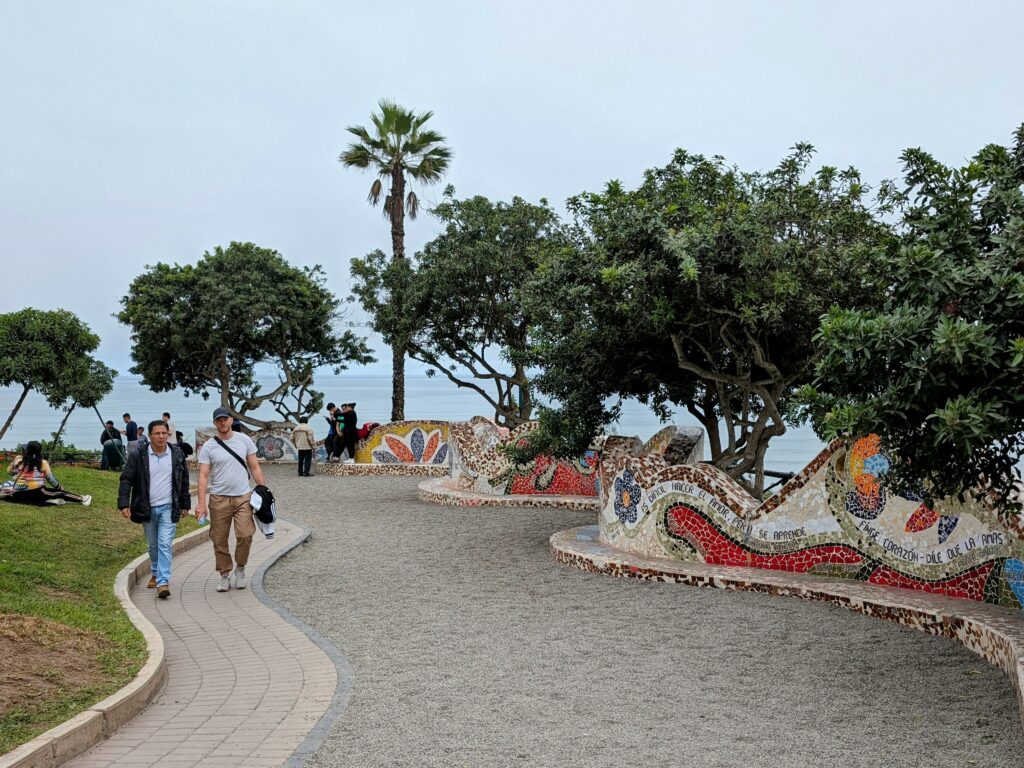
Larcomar
Also within the Malecon de Miraflores is a mall called Larcomar. It is built into the cliffside and is a good place to stop, shop if you’re interested, and take in the views. While it is geared towards more United States and international brands, it is a nice place to stop to grab a coffee or a snack from a street vendor or cafe as you continue on your walk.
Touring through Barranco
As you continue on your walk along the ocean, you will reach the Barranco neighborhood. You can walk along the ocean or weave through the streets that make up this neighborhood to explore the area. It has many different historical colonial buildings that you can discover throughout. Make sure to bring cash to this area as many of the smaller restaurants and bars may only take cash.
Puente de los Suspiros
One of the main attractions is the Puente de los Suspiros (Bridge of Sighs). It is known as a place for lovers to secretly meet up and was solidified as a romantic destination when it was written into a song by Chabuca Granda. There are artisans beneath the bridge and coffee shops, restaurants, and bars all around the area to explore.
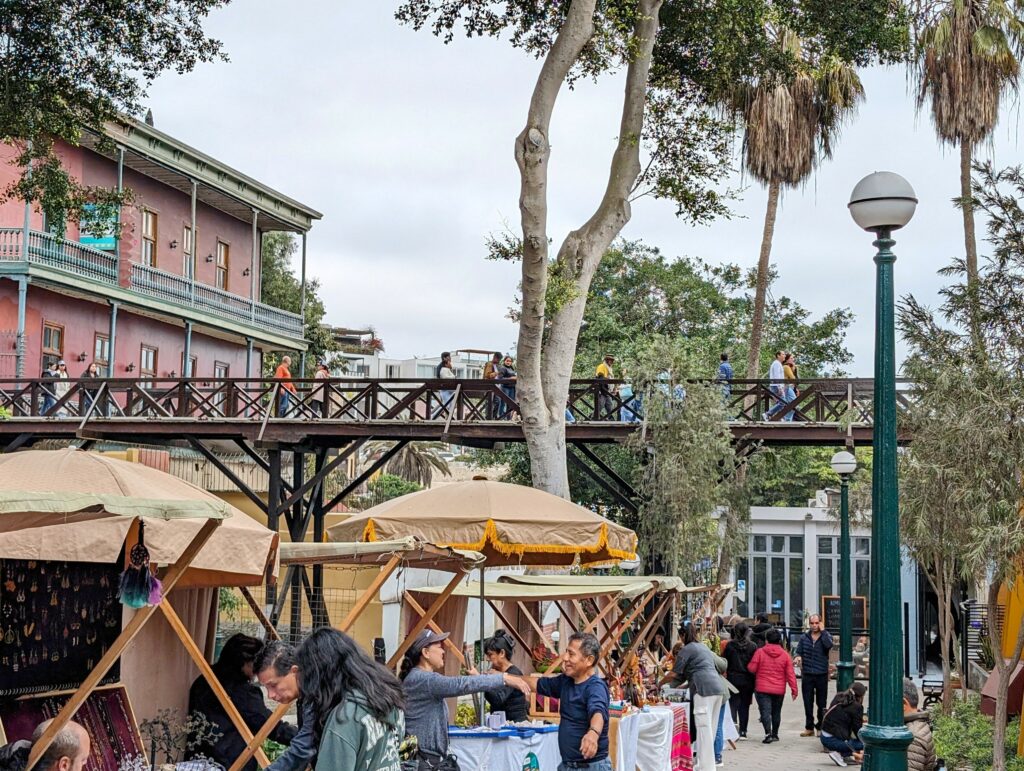
Explore Barranco
You can continue to walk around Barranco on your own. If you are interested in learning more about the neighborhood, you can also attend a free walking tour. You can learn more about the free walking tour of Barranco here. We also recommend visiting the bar, Juanito de Barranco to try a simple, yet delicious Pisco Sour. It is a true institution with great drinks and classic Peruvian bar food.
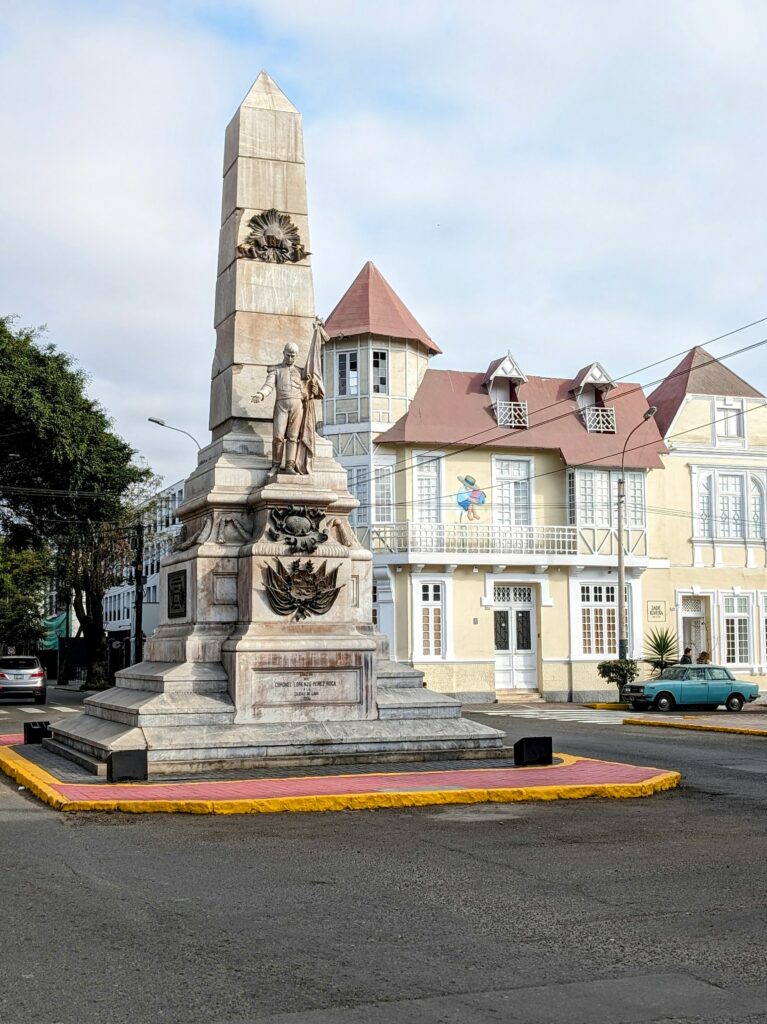
Day 3: Archaeological Exploration of Lima
On the final day in Lima, we recommend learning about the ancient cultures of the region and the greater Peru area. The following two destinations truly highlight this important aspect of Peruvian history and can be visited in one day.
Huaca Pucllana Site Museum
Huaca Pucllana is an ancient pyramid temple that was constructed almost 2,000 years ago. It was discovered within a mound in 1981 after being used for dirt biking and a hill to live on. The interesting thing about this site is that it lies directly in the middle of the city. Historically, it was used by a few different cultures that inhabited the Lima area and it continues to be excavated to discover the way of life of the people who lived in this region for thousands of years.
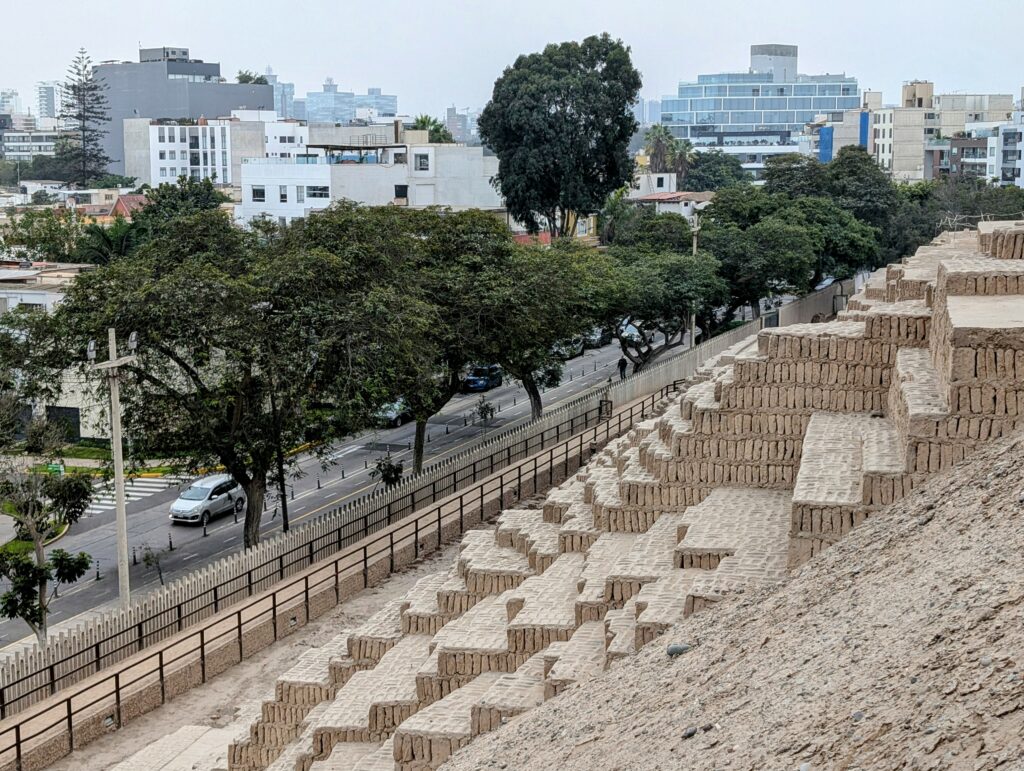
There is a small fee to visit the Huaca Pucllana site and it includes a guided tour of the land. This tour walks through the purpose and uses of different terraces around the site, giving greater context to the religion and mindset of the people here.
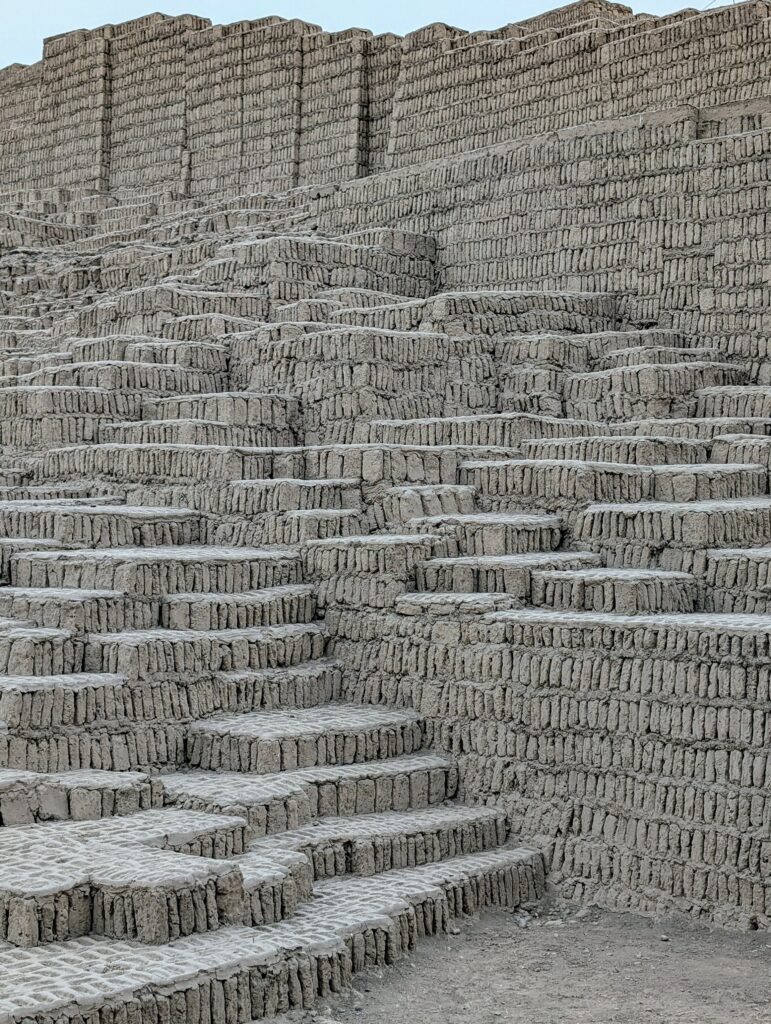
Larco Museum
After visiting the Huaca Pucllana Site Museum, you can take an Uber to the Larco Museum, a private collection of artifacts throughout Peru that helps explain and describe the different societies that have occupied Peru in its pre-Columbian history. For just a little more, you can get a tour of the presented collection, which helps highlight the most important artifacts on display and gives context to the artifacts in the lives of these ancient societies. They also help show similarities and differences between all the different societies, including the Incan people. It is definitely worth getting the guided tour of the museum!
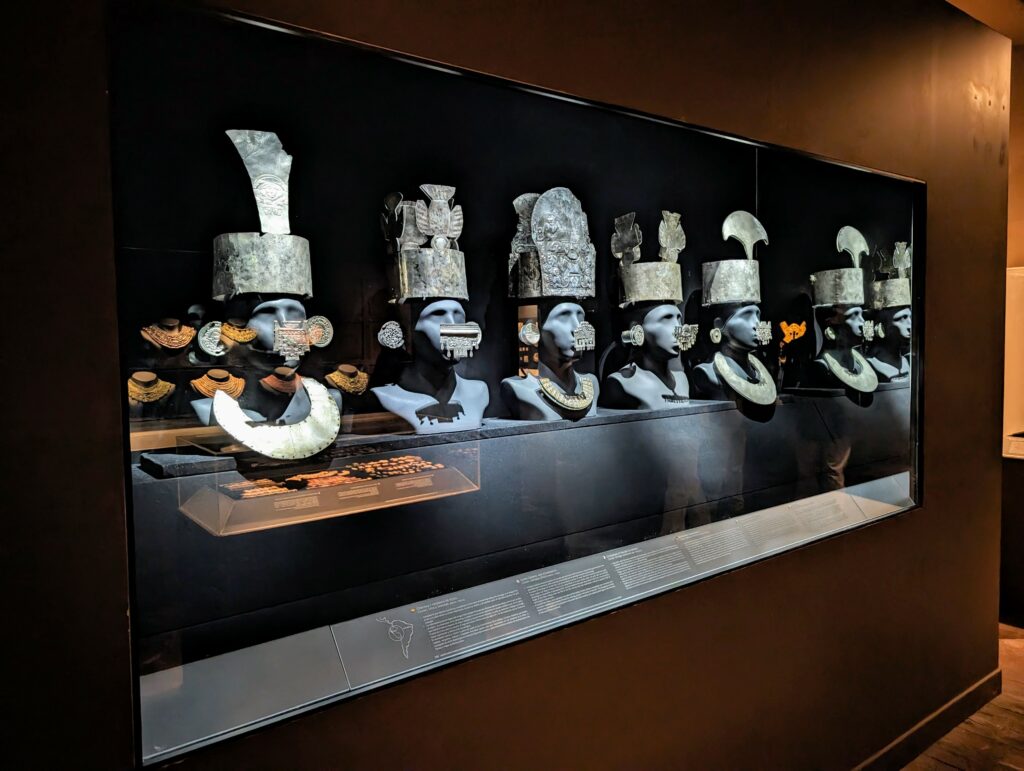
Some exhibitions that are more well-known in this museum include their artifact storage (a public display of all the artifacts that are owned by this museum collection) and an erotic exhibition (showing the use of sex in the artwork of the pre-Columbian societies and the celebration of the duality of the two sexes in nature).
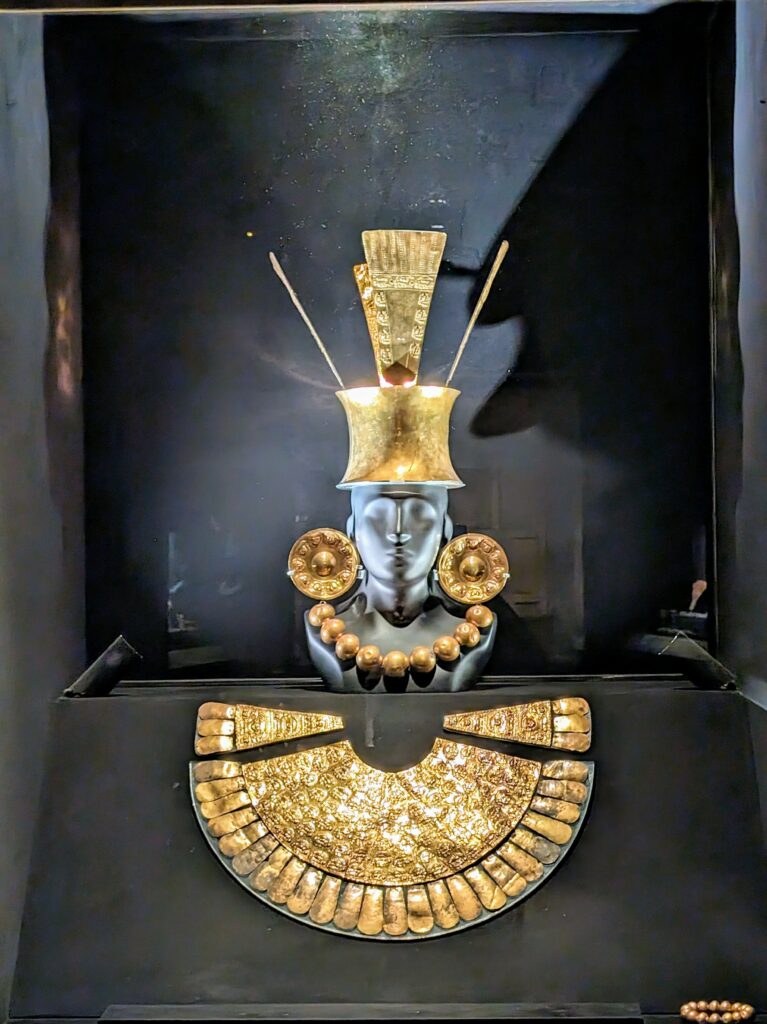
Family Friendly Bonus: Circuito Magica del Agua
This experience is truly intended for families with younger children, although anyone can enjoy it! It’s a park full of fountains in different formations. Three times a night they put together a light and color show at fountain number 3 where art is projected onto the fountain. Other fountains spray in different ways and there is even a water tunnel that you can go through. It is an interactive activity at a very low cost! You can learn more about the Circuito Magica del Agua here.
